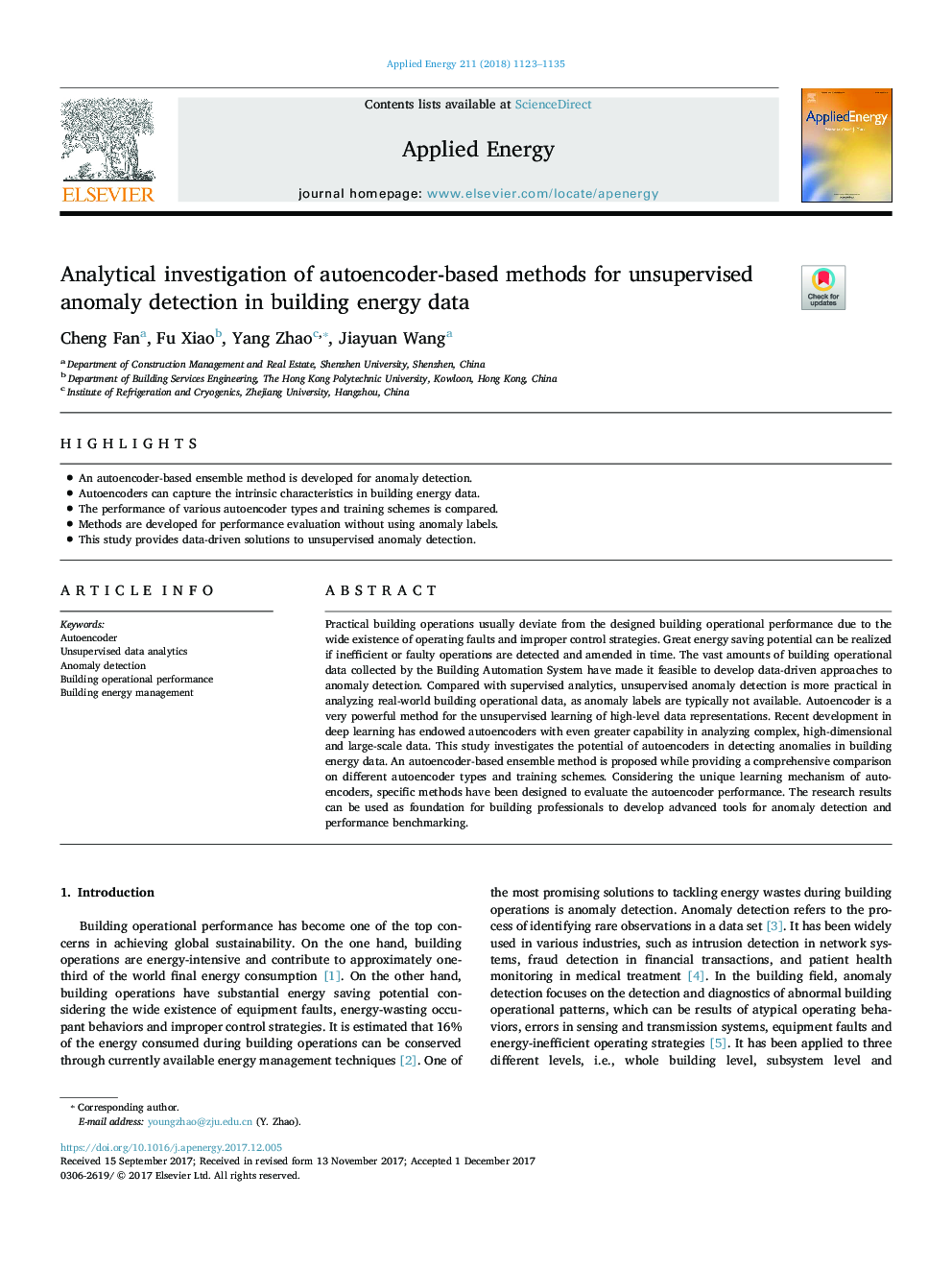| Article ID | Journal | Published Year | Pages | File Type |
|---|---|---|---|---|
| 6681487 | Applied Energy | 2018 | 13 Pages |
Abstract
Practical building operations usually deviate from the designed building operational performance due to the wide existence of operating faults and improper control strategies. Great energy saving potential can be realized if inefficient or faulty operations are detected and amended in time. The vast amounts of building operational data collected by the Building Automation System have made it feasible to develop data-driven approaches to anomaly detection. Compared with supervised analytics, unsupervised anomaly detection is more practical in analyzing real-world building operational data, as anomaly labels are typically not available. Autoencoder is a very powerful method for the unsupervised learning of high-level data representations. Recent development in deep learning has endowed autoencoders with even greater capability in analyzing complex, high-dimensional and large-scale data. This study investigates the potential of autoencoders in detecting anomalies in building energy data. An autoencoder-based ensemble method is proposed while providing a comprehensive comparison on different autoencoder types and training schemes. Considering the unique learning mechanism of autoencoders, specific methods have been designed to evaluate the autoencoder performance. The research results can be used as foundation for building professionals to develop advanced tools for anomaly detection and performance benchmarking.
Related Topics
Physical Sciences and Engineering
Energy
Energy Engineering and Power Technology
Authors
Cheng Fan, Fu Xiao, Yang Zhao, Jiayuan Wang,
